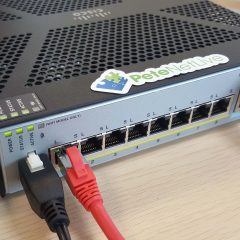Error While Attempting to Access a Windows Share
KB ID 0000439 Problem While attempting to connect to a Windows share you receive the error. Windows cannot access {target machine name} Check the spelling of the name. Otherwise there might be a problem with your network. to try to identify and resolve network problems, click diagnose. if you click “Diagnose” you will see the following, Error code: 0x80070035 The network path was not found. Note: You may also find that if...
Windows Server – Enable Multiple RDP sessions
KB ID 0000471 Problem Server 2012/2008 R2 unlike their predecessors, comes with the multiple remote desktop session restriction enabled. If you are only connecting to a server for remote administration purposes that can get a bit annoying, especially if you have a generic administrative account that multiple techs are using, and you keep kicking each other off the server. Just as with earlier versions of Windows server you CAN have...
Windows Server 2008 R2 – Configure RADIUS for Cisco ASA 5500 Authentication
KB ID 0000688 Problem Last week I was configuring some 2008 R2 RADIUS authentication, for authenticating remote VPN clients to a Cisco ASA Firewall. I will say that Kerberos Authentication is a LOT easier to configure, so you might want to check that first. Solution Step 1 Configure the ASA for AAA RADIUS Authentication 1. Connect to your ASDM, > Configuration > Remote Access VPN. > AAA Local Users > AAA Server Groups. 2....
Deploying Certificates via ‘Auto Enrollment’
KB ID 0000919 Problem SHA CERTIFICATE WARNING: Note This article was written some time ago, ensure your CA environment does NOT use SHA1 for your certificates, if it does, Please visit the following link for migration instructions; Upgrade Your Microsoft PKI Environment to SHA2 (SHA256) I need to setup wireless authentication based on computer certificates, I’ve done similar jobs before by manually issuing certificates for Cisco...
Windows – “Don’t Display Last Login User Name” via GPO
KB ID 0000460 Problem By default Windows will display the last user that successfully logged on, on shared machines or in a secure domain environment you might not want this.. Solution On a Single (stand alone) machine. 1. Click start and in the run/search box type gpedit.msc{enter} 2. Navigate to > Computer Configuration > Windows settings > Security Settings > Local Policies > Security Options >...





